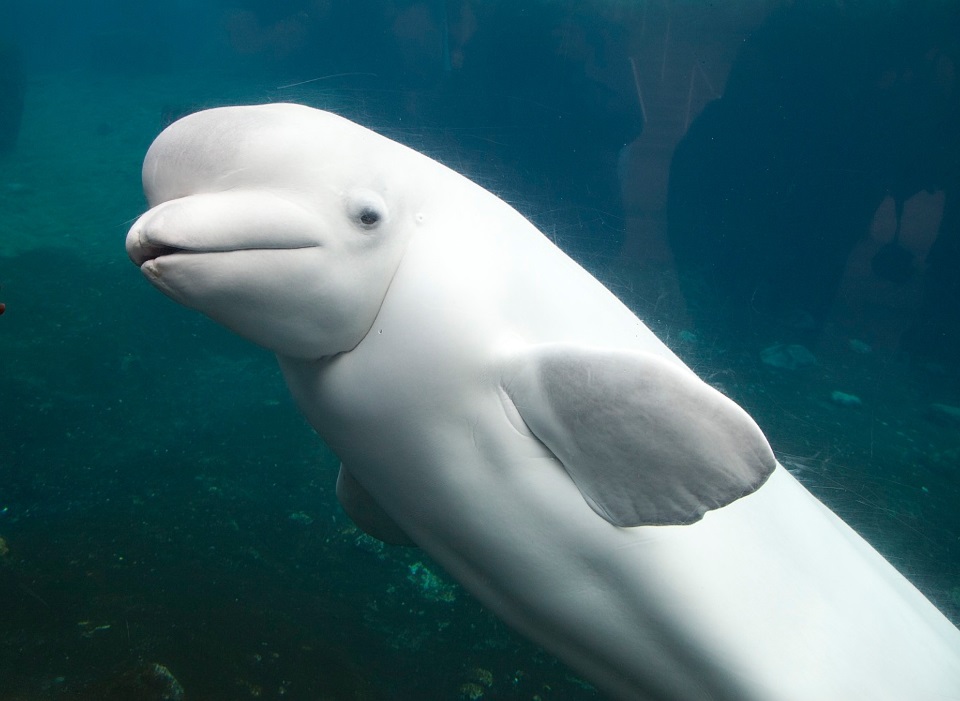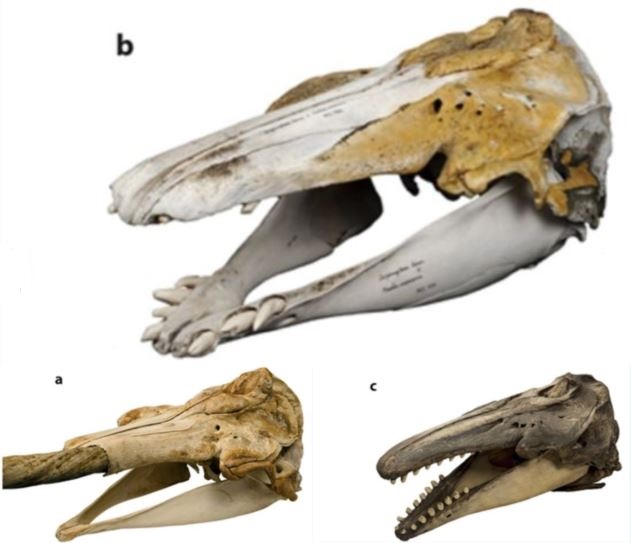Beluga and narwhal get along amicably; sometimes they travel in the Nordic waters together. These two species of Arctic cetaceans have succeeded in breeding offspring. How this happened is a mystery. According to scientists, over the last at least 1.25 million years there have been no cross-species crossings between a beluga and a narwhal. The finding of the hybrid had been waiting for its discovery since the 1980s and it was helped by accident.
What Unites and Distinguishes These Different species?
The Beluga Whale (Delphinapterus leucas) is characterized by its white color and “likeable face”. It is known as the “sea canary” because it can communicate with many sounds. It also has a rich facial expression. Narwhal (Monodon monoceros) is a, called the “marine unicorn” for its tooth leading from its upper jaw.

Both are smaller cetaceans in similar size, growing to between 3.5 and 5.5 meters long; and have similar migratory and mating patterns. But there are also significant differences, including in appearance, prey selection and diving capabilities.
Capture of Specimen
Hunting for endangered cetaceans is prohibited by international conventions. However, they granted an exemption to the indigenous peoples of Siberia, Alaska and Greenland, for whom large marine mammals are an important source of livelihood. One such catch from Greenland has become the source of a completely unexpected scientific discovery.

In the 1980s, a Greenlandic inhabitant caught a strange animal with unusual teeth. He could not identify the animal. It wasn’t beluga, it was not narwhal. However, he processed the catch for the meat and exposed the skull as a shed trophy.
One Visit Was Enough
A few years later, a professor at the Greenland Institute of Natural Resources noticed it. He got a skull from a hunter and sent it to Copenhagen. The skull remained in the museum’s depository under the designation MCE1356.

Thirty years later, a team of scientists from the University of Copenhagen, based on a genetic analysis of the creature’s DNA, found it to be a male cetacean hybride, a first-generation hybride whose father was a beluga and its mother narwhal.
Carnivorous whites and narwhal usually hunt prey in the water column. Their common descendant with strange teeth probably had to feed on what he found on the seabed.
This is the first and so far the only evidence that it is possible to cross between these two types of arctic toothed cetaceans at all.
Source & credit: Mikkel HØEGH Post, Natural History Museum of Denmark, https://cosmosmagazine.com/biology/first-ever-beluga-narwhal-hybrid-identified, https://en.wikipedia.org/wiki/File:White_Whale_Narwhal_150.JPG, flickr.com, pxhere.com




